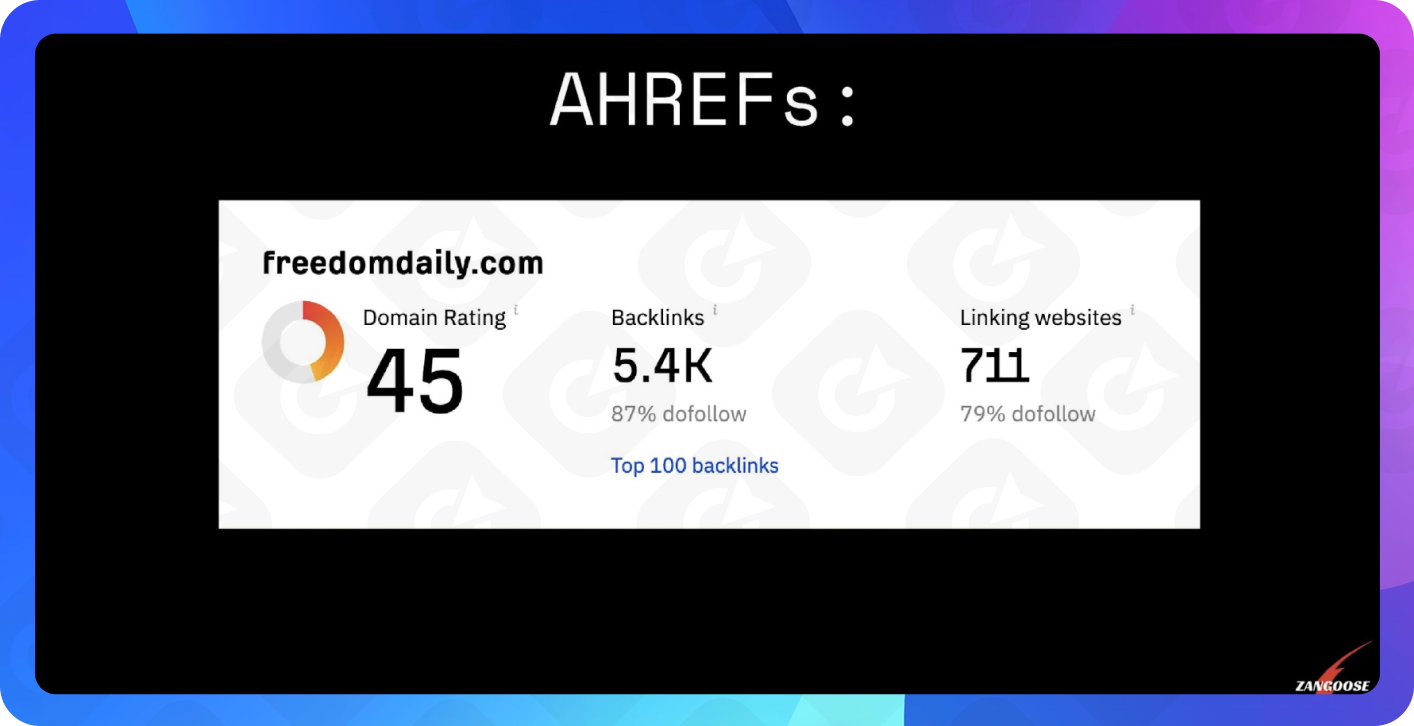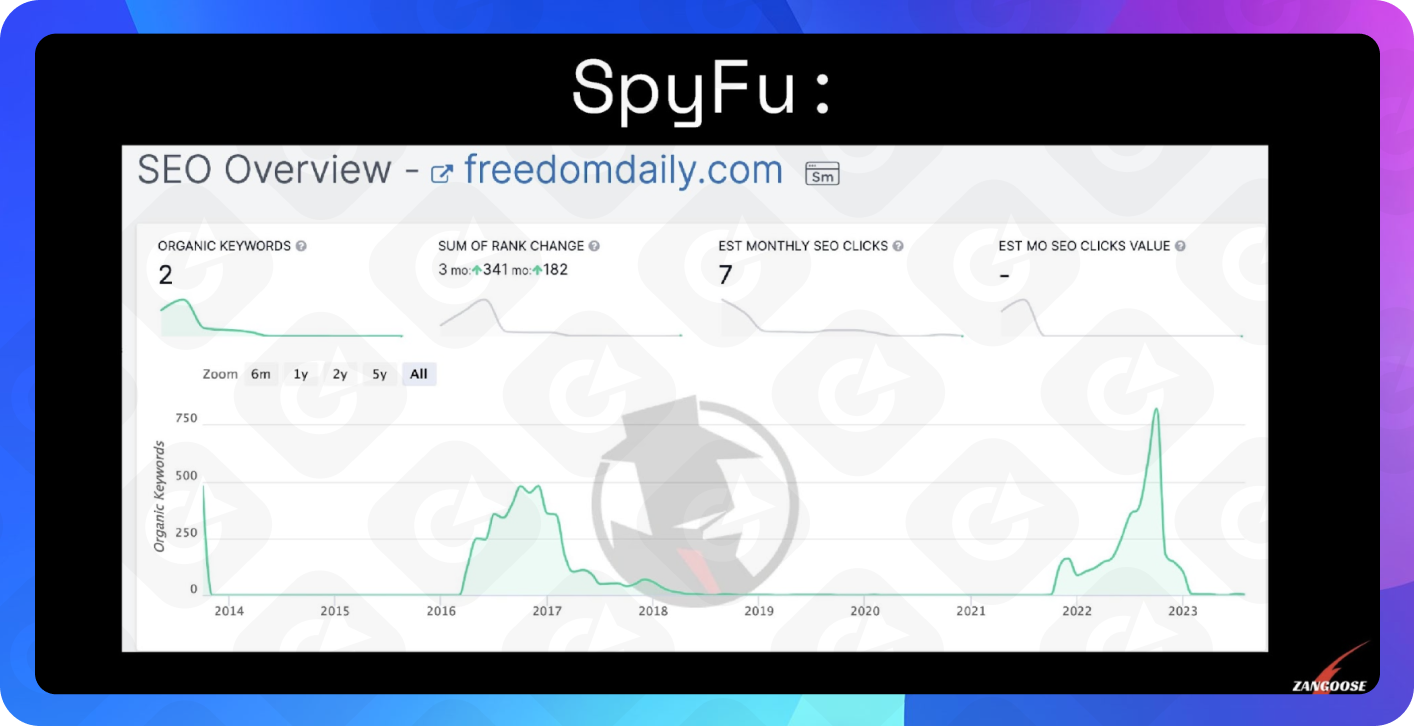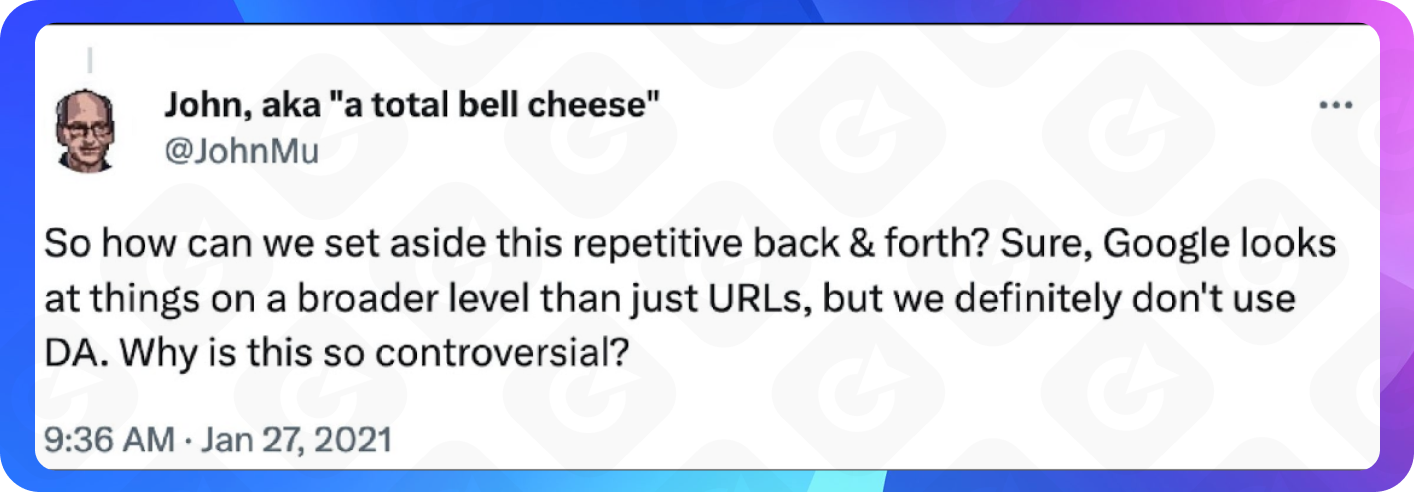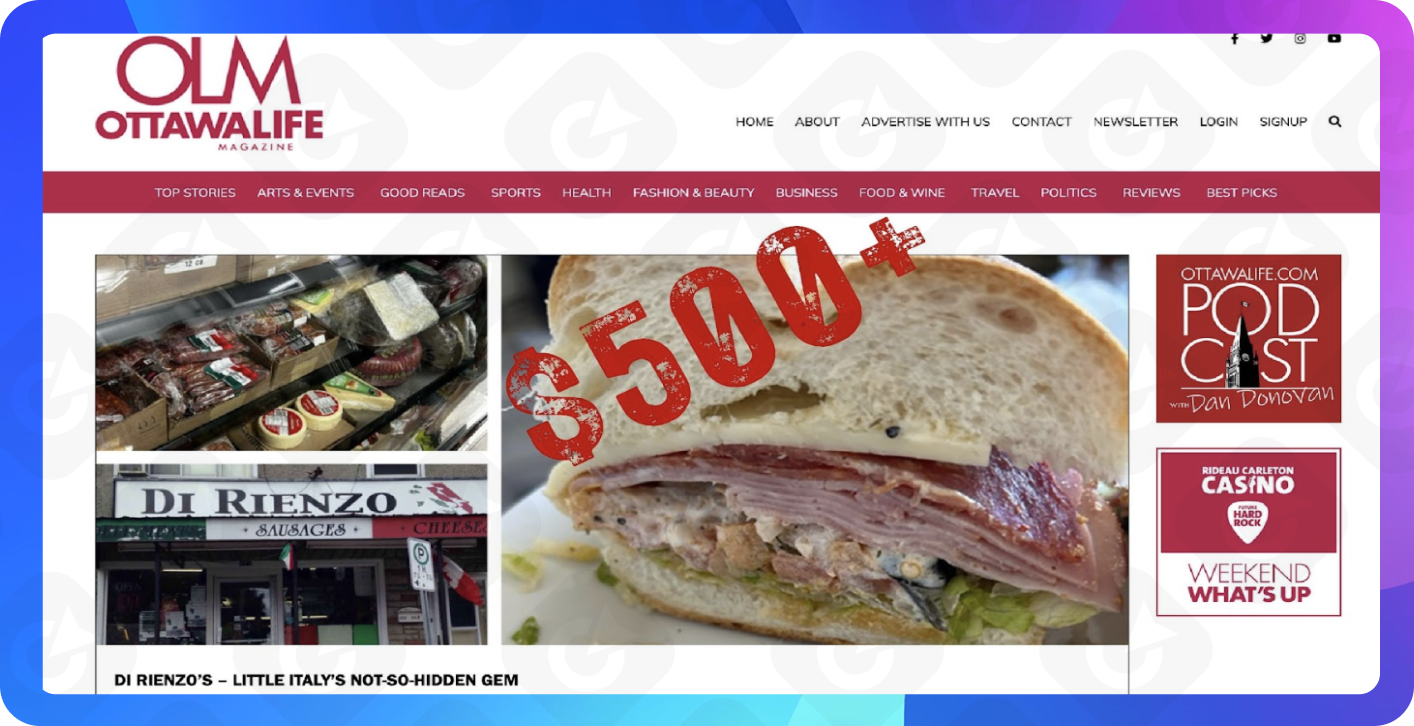
During Collaborator's recent webinar, Julia Logan, SEO Consultant at Irish Wonder and a founder of Zangoose Digital, shared her expertise on the matter. She explained what's wrong with the current domain and link market, discussed the limitations of SEO tools, and the history and evolution of SEO metrics, followed by an informative Q&A session.
We've compiled it into a handy guide for you to dive deeper into the topic. Let's get started!
About the Speaker
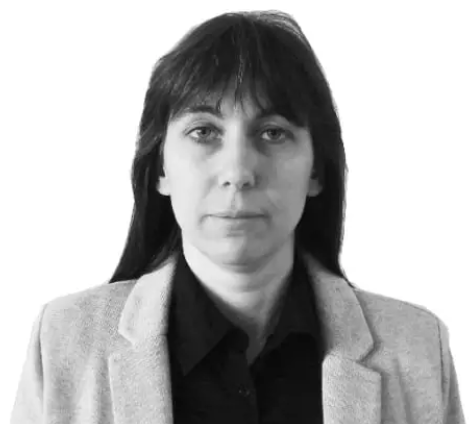
Here are a few facts about Julia:
- She’s been working in SEO since 2000
- Has served as a judge for the UK Search Awards
- In 2020, she founded Zangoose Digital — a boutique agency that helps clients in the most competitive niches, including gambling, pharmaceutical, real estate, and insurance.
Understanding SEO Metrics: How to Choose a Good Domain for Link Building?
Let's examine a real-world example: a domain currently on auction for $9,500. At first glance, this might seem like a reasonable price for a potentially valuable domain.
But is this price truly justified? To answer this question, we have to look beyond surface-level metrics and dig deeper into the domain's history and actual value.
In this case, we can see that the domain is attracting significant interest. On a different auction-type website, with nine hours left in the auction, there were already eleven bids from four different potential buyers.
Interestingly, this same domain was sold in 2019 at the same auction for more than $2,000. This price increase might suggest growing value, but let's investigate further.
When evaluating a domain, many SEO professionals turn to popular tools like Ahrefs. In our example, Ahrefs shows a Domain Rating (DR) of 45, which seems impressive at first glance. It also reports over 5,000 links from 700 domains. These numbers might make the domain appear valuable, but there's a catch.
Ahrefs, like many SEO tools, often shows both existing links and those that no longer exist. This can lead to an inflated perception of a domain's current link profile. When we compare this data with Majestic, another reputable SEO tool, we see a different picture.

Majestic shows fewer linking domains, highlighting the importance of using multiple tools for a comprehensive analysis. Majestic also provides additional metrics like trust flow and citation flow, which can offer insights into the quality and quantity of links.
While link metrics are important when choosing a domain, they don't tell the whole story. There is often one crucial element that is being overlooked: organic visibility. Julia suggests using tools like SpyFu for this instance, as they can provide valuable insights into a domain's traffic history and keyword rankings.
In our case, SpyFu reveals that the domain's peak activity was in 2022, followed by a pretty sharp decline. This information, absent from basic link metrics that were discussed before, is crucial for assessing a domain's true value and potential.
SpyFu updates its data monthly, making it excellent for viewing long-term domain history, though less suitable for real-time analysis. When we look at the short-term decline in traffic over the last year, we see an interesting pattern. The domain was acquired in 2019, saw a peak in late 2022/early 2023, and then declined sharply.
If we look at the keywords that the website ranks for, we will see that these are mostly very long-tail keywords with low search volume, meaning commercially, for something very competitive, this domain might not be very interesting. As Julia said, you need to look at more than one information source.
For a more complete picture, it's important to examine a domain's historical performance. Sistrix, which updates weekly, can provide valuable insights into a domain's visibility over time. It also allows you to overlay information about Google Updates, helping you understand if changes in visibility correlate with specific algorithm changes.
In our example, Sistrix shows that the domain's visibility dropped significantly after a Google update in 2017. This historical context is vital for understanding a domain's potential and the challenges it might face in the future.
SEO Metrics Evolution: Are Third-Party Metrics Important??
To fully appreciate the current state of SEO metrics, it's helpful to understand their evolution. In 1996, when Larry Page and Sergey Brin founded Google, they introduced PageRank as a key algorithm for determining how pages should be displayed for certain queries.
PageRank was visually represented by a toolbar that showed a scale from 0 to 10. Most sites fell between 0 and 7, with higher numbers being increasingly rare. A gray PageRank indicated either that Google had not yet indexed the site or that it was under some form of penalty.
As Google's popularity grew, so did attempts to manipulate PageRank. Site owners used various tricks to artificially boost their PageRank, often to charge more for links or to appear more attractive for link exchanges. This led to the emergence of "fake PageRank" and services that claimed to check for it.

The visual representation of how PageRank was calculated
Eventually, Google stopped updating the visible PageRank toolbar and discontinued it entirely in 2013. However, PageRank still exists as an internal Google algorithm, though likely in a modified form.
With the disappearance of visible PageRank, third-party metrics emerged to fill the void. Moz introduced Domain Authority (DA), Ahrefs created Domain Rating (DR), and Majestic developed its own set of metrics. However, it's crucial to understand that these metrics are not used by Google for ranking purposes.
John Mueller of Google frequently clarifies this point in discussions with SEO professionals. When site owners ask why their high DR site isn't ranking well, Mueller yet again explains that Google does not use DR or similar third-party metrics in its ranking algorithms.
Despite the evolution of SEO metrics, manipulation persists. A recent test by Dmytro Sokhach demonstrated how easily Domain Rating can be artificially inflated. In this test, they purchased a service to increase the DR of a non-existent domain. Remarkably, Ahrefs showed a DR of 46 and 52 backlinks for this “phantom” domain.

While Ahrefs is showing 52 backlinks from 44 websites, Majestic only showed 7 of them
This manipulation is often achieved by creating a network of sites with artificially inflated metrics and then using these sites to boost the metrics of other domains. We can clearly see it when looking closer at the links in question.
This practice underscores the importance of looking beyond surface-level metrics when evaluating domains or links.
What to Look for When Buying Backlinks
To showcase what exactly you should look for when choosing backlinks, let's examine another real-world example: a website offering links for $500+.
At first glance, the site looks presentable, but is the link worth the price tag? To make an informed decision, we must consider several factors:
It's crucial to remember that each tool has its own methodology and database, which can lead to varying results. By cross-referencing data from multiple sources, you can get a more accurate and comprehensive picture of a domain's link profile.
In our example, Ahrefs shows a DR of 67, with 96k backlinks from 5.8k linking websites. Majestic, however, reports a Trust Flow of 23 and only 18k links from 2.5k websites. These discrepancies once again highlight the importance of using multiple tools for evaluation.
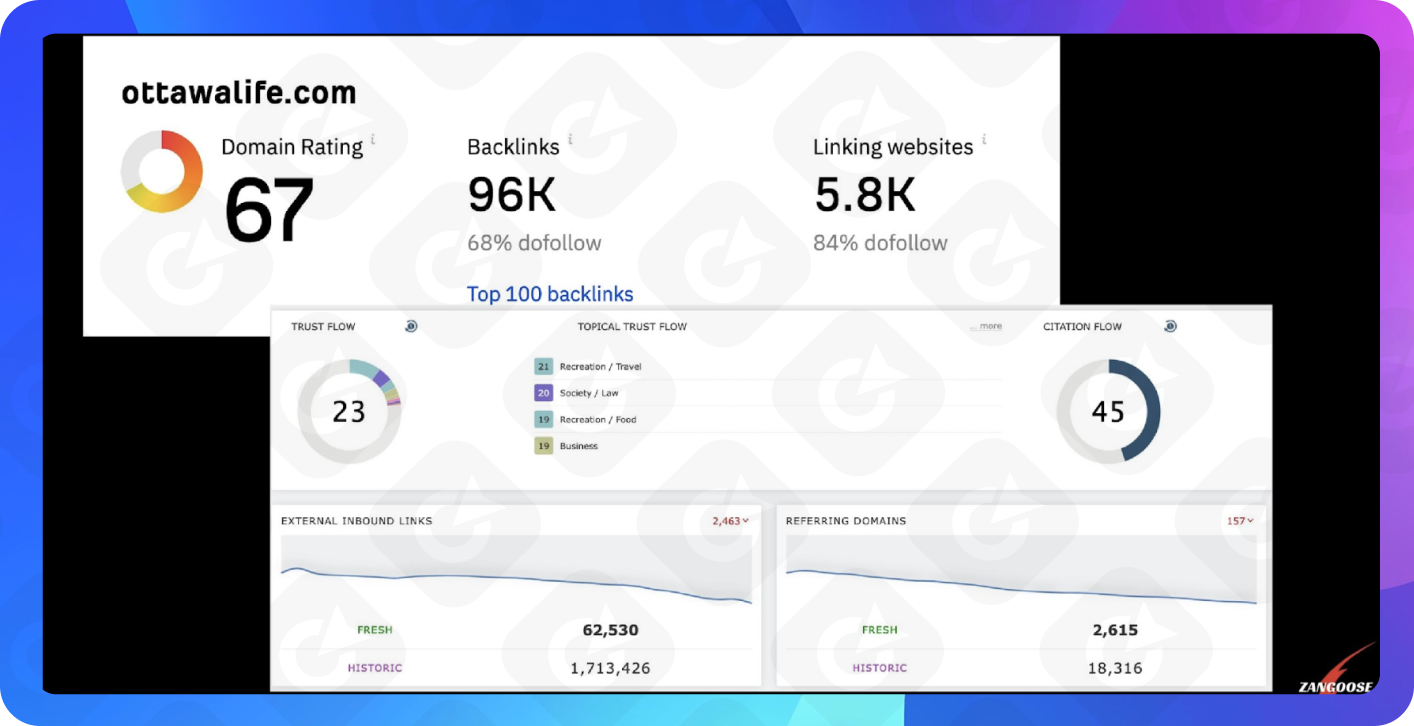
The website from our case appears to cover a wide range of topics. While backlink versatility can be beneficial, it's most valuable when the link source aligns closely with your niche. When evaluating a potential link, consider how well the site's content matches your industry or target audience. A link from a highly relevant site can carry more weight in Google’s eyes and provide more value to your visitors.
A lower link density often means more value per link. If a page links to many different sites, the value of each individual link is diluted. Think of it like a pie - the more slices you cut, the smaller each piece becomes. When assessing a potential link, look at the page where your link would appear and consider how many other outbound links are present.
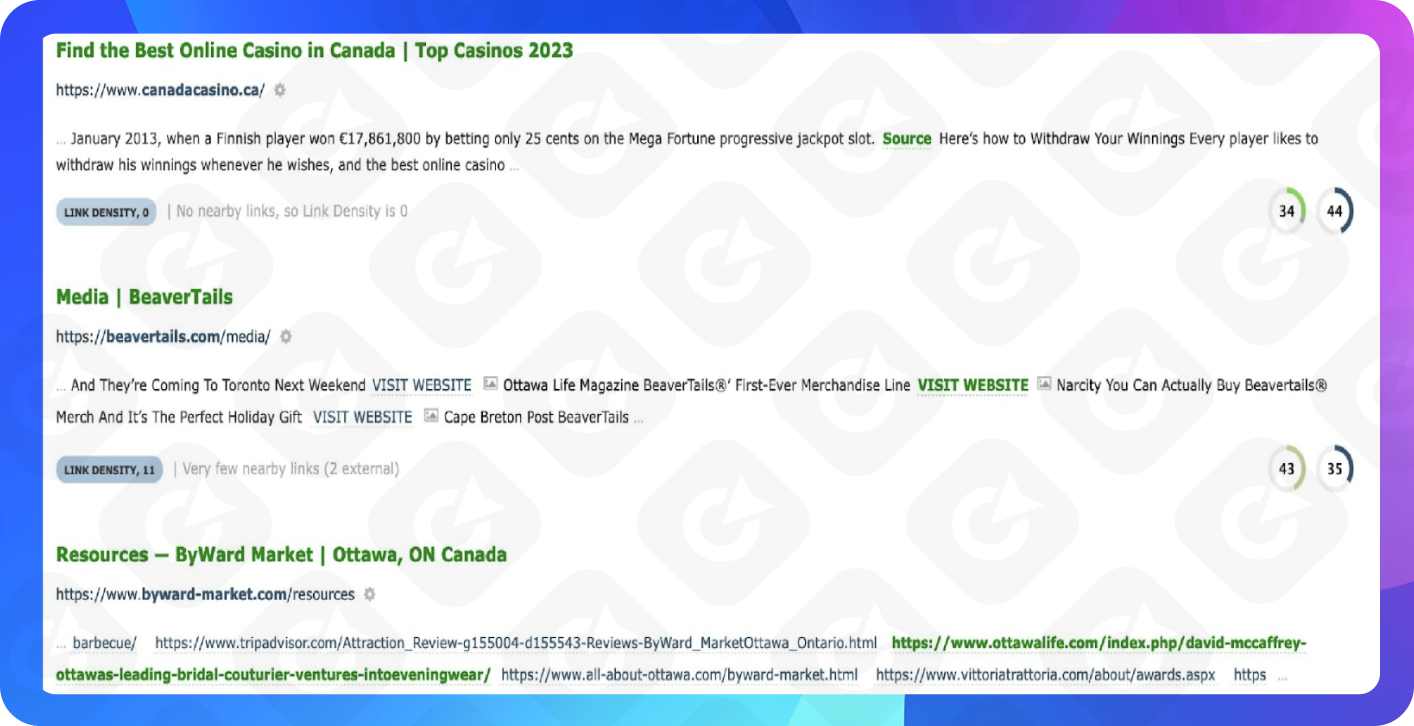
This particular domain has been active since 1999, with consistent content and ownership. Such stability is generally a positive sign. A long-standing domain with a consistent history suggests reliability and potentially higher trustworthiness in Google’s eyes. However, always check for any significant changes or periods of inactivity that might raise red flags.

Using tools like SpyFU and Sistrix, we can see that the site peaked in visibility in 2022. Despite a relative decline, it still ranks for around 14,000 keywords, indicating significant ongoing visibility. It’s important to not just look at current visibility, but to analyze trends over time. A site that’s maintaining steady visibility or showing gradual growth can be more valuable than one with erratic spikes and drops.

When overlaying Sistrix data with Google Updates, it shows that the site was slightly affected by the Product Reviews Update in 2023, with a more significant drop in June that didn’t coincide with any known update. This could be due to server issues or other factors affecting organic visibility, which is another important factor to consider. Understanding how a site responds to Google updates can give you insights into its overall quality and alignment with Google’s guidelines. A site that consistently weathers updates well might be a more stable and valuable link source.

Searching for the domain on Google shows it appearing first in results, with a knowledge graph panel. This indicates that Google recognizes it as a significant entity, which is a positive sign. Google’s recognition of a site as an entity can suggest higher authority and trustworthiness. It’s worth checking if the site appears for branded searches and what kind of information Google displays about it.
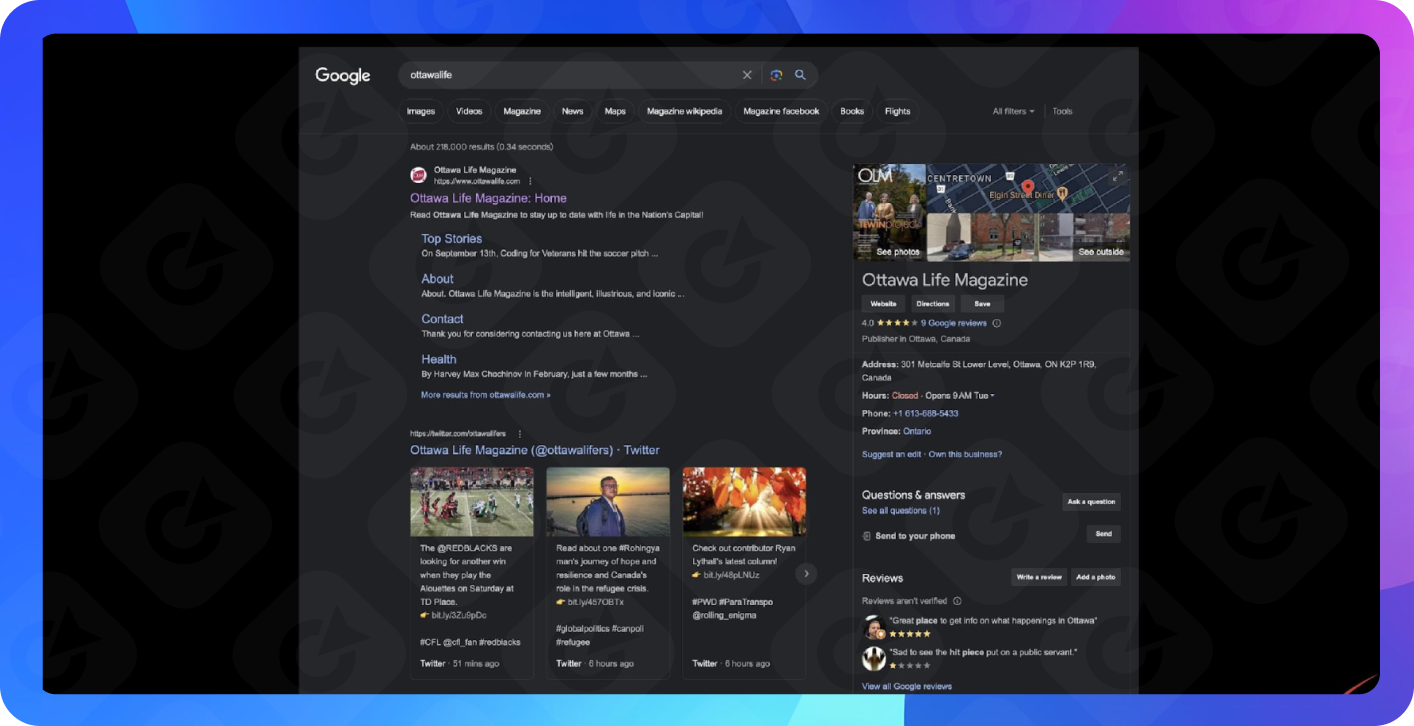
It’s important to check whether all the pages of the domain are properly indexed by Google. Use "site:" operator to verify the indexation status. If a significant portion of the site’s content is not indexed, it could indicate technical issues or quality problems.

- Metric Discrepancies
- Topical Relevance
- Link Density
- Domain History
- Organic Visibility Trends
- Impact of Google Updates
- Google Recognition
- Indexation Health
When all these factors are considered together, they form a comprehensive picture of the link's potential value. In this case, despite some concerning factors like the discrepancy in reported backlinks and the recent traffic decline, the long and stable history of the domain, its recognition by Google as an entity, and its still-significant keyword rankings suggest that the link could potentially be worth the investment for the right buyer.
However, the final decision should depend on your specific needs, niche, and overall SEO strategy. A link that's valuable for one site might not be as beneficial for another.
Q&A
If you had to choose between a domain with high DR and 100k+ traffic (and other good metrics) for a guest post or ten domains with lower metrics (10k+ traffic), which option would you choose?
Don't focus on DR. Instead, look for domains that haven't dropped recently, aren't spammed, and are most relevant to your site. Consider factors beyond DR, as it's essentially a meaningless metric on its own.
Does it matter if a website has a large number of traffic keywords overall but very little on the homepage?
It depends on the site's goal and architecture. Consider whether you're aiming to sell something or drive traffic to the homepage and what converts better for you—the homepage or other pages. A site audit may be needed to determine if the traffic distribution is normal or not.
Can we optimize one language at a time for a multi-language site?
It's possible, but requires careful consideration. Sometimes, a site's history in one language can affect its performance in others. There have been cases where adding a second language didn't work well because the site's history was primarily in the first language for a long time, causing Google to not perceive it as relevant in the new language for quite some time.
Does it make sense to have multi-tier links? You mentioned choosing strong links for tier-1, but if creating tier-2 or tier-3 links, can you ignore these metrics entirely and just build links as they are?
Multi-tiered linking can work, but low-quality links are generally not worth it. If the links are so low-quality that Google doesn't even index them, they won't benefit your site. Quality matters more than quantity. In our bespoke private networks, we use expired domains with existing link profiles, which effectively creates multiple tiers of quality links.
How reliable is the traffic data displayed on exchanges and services like Ahrefs, Similarweb, and others?
Always verify the data yourself. The more information sources you have, the clearer the picture becomes. Buying links requires thorough checking and analysis. We approach link purchases similarly to how we evaluate expired domains, analyzing everything carefully. However, no one can guarantee long-term results with purchased links due to the dynamic nature of the internet.
Is it worth buying cheap backlinks on Collaborator.pro?
Yes, but you shouldn't focus on the price. Price shouldn't be the primary factor. We need to evaluate many different metrics for the domain, with price being one of the last considerations. It's difficult to give a definitive answer without considering various factors. Generally, having diverse traffic sources creates better long-term insurance against issues with Google.
If you’re ready to up your SEO game, come check us out🙂
Build Quality Backlinks in Two Clicks
Have you ever had exceptions where you evaluated a domain without relying on third-party metrics (DR, SDR, TF, CF, etc.) and considered it authoritative, but the domain did not perform as expected?
Yes, because we evaluate domains based on the current moment and can't predict future changes. The internet is dynamic, and sites can change, receive penalties, or lose relevance over time. We factor in this risk when building private networks and conducting regular audits to assess value changes. While we guarantee the quality at the time of purchase, long-term performance can't be guaranteed with absolute certainty.
Is it better to purchase different domains for foreign markets and optimize them separately for different languages?
We always do it that way. So, if we have a website in French, German, or Spanish, for example, we mostly buy links or domains that are French, Spanish, or German. Wherever possible, we try to logically align them. Sometimes, we use domains in other languages if it makes sense to link them. But the majority will still be in the language that we are focusing on when grounding our site.
Do you use redirect chains in your work?
Within websites, yes, because it's part of normal site maintenance. If we have broken pages that don't make sense to restore, or if there was a good page that we no longer need, or perhaps we're uncertain about the status of a page but there's nothing suspicious about it, we redirect it somewhere specific. Do we use this between sites? No, I moved away from that practice several years ago. I noticed it wasn't as effective for our purposes compared to using full-fledged websites.
What do you use to analyze hidden links of domains before buying? Do you look for hidden links, and is it necessary at all?
Let's put it this way. We use as many different tools as possible. If it's hidden from everything, we can search directly in search engines, and that way, we might find something because if it's even hidden from search engines, then who needs such links at all? But generally, if there was some obvious manipulation going on, then we start questioning whether we need such a domain. But yes, it can be analyzed. It can be found, even if it's blocked from search engines.
Has it ever happened that the site's page structure plays a bigger role, and despite having a lot of quality links, you can't achieve the level of competitors who simply copy other sites and immediately rank in the top ten? Do links matter at all? Are there cases where links don't matter, and something else like page structure does?
Well, why can't we change the structure then? For me, it's not entirely clear. I mean, you can look at it this way: try and work on both the structure and the links. No one forbids doing several things simultaneously. No one says we should only focus on just links or just one site. We should do more than that. We need to know that everything is in order on our site. I always advise starting a site audit before throwing a big budget into links and seeing that nothing is coming out.
How do you view donor sites where the main portion of traffic is referral traffic? Is such a site worth considering?
You have to analyze why you need this site and whether this referral traffic will be sustained. If you can be sure it will be sustained, what's the problem? This is also a business model. It's not necessary to rank in Google or to derive direct profit from the site for it to work well. I've had clients who generated massive traffic from Facebook before even starting to rank in Google, and they thrived on that alone.
So, when building links, is it more accurate to take links like those of the niche leaders or to seek terms for better or more affordable links that are not with the leaders? Is there a difference in approach depending on the age of my site?
To get links like those of the top leaders in the niche, you must have a budget like the top leaders in the niche at a minimum. That's the first thing. Secondly, you must have a history like the top leaders in the niche. You have to know the same people who know the owners of the top leaders in the niche. Also, if you have a website and a website of a top leader in the niche, you have everything the same, and even the links are the same. Why should Google decide that you should rank higher than the leader? Do better, do something that sets you apart. It doesn't necessarily have to be different from the leaders.
Does the approach differ depending on age? Not really. It's more about what you already have in your profile. If you already have a certain volume of links in your profile, you can perhaps do something a bit faster, and more aggressively.
Conclusion
Wrapping things up, let's remember what really matters: the best links and domains are the ones that fit your SEO game plan and actually help your audience. It's like finding the perfect pair of shoes - they've got to look good and feel good too!
Don't just jump at the first shiny domain or link you see. Use multiple tools, such Ahrefs, Sistrix, Majestic, and SpyFU, to gather comprehensive data and have a better picture. Consider historical performance and stability, and assess the relevance of the domain or link to your specific niche and goals.
SEO is like fashion — it's always changing. So keep your eyes and ears open, stay curious, and never stop learning about what's hot in the world of domains and links. The more you know, the smarter you'll be with your choices.
P.S. Follow us on LinkedIn to receive the hottest industry updates🔥
The Collaborator team thanks Julia for such a comprehensive and valuable presentation and wishes you luck in your future SEO endeavors.



